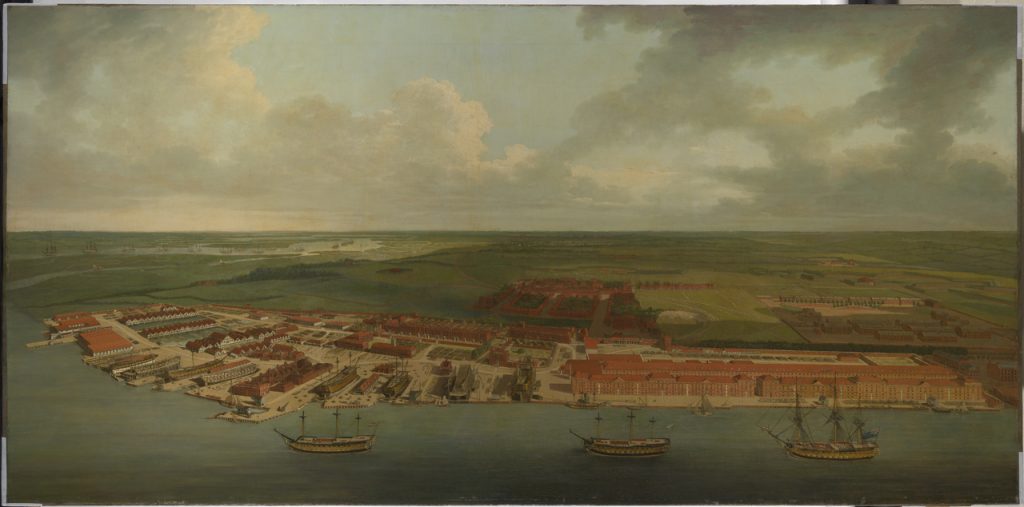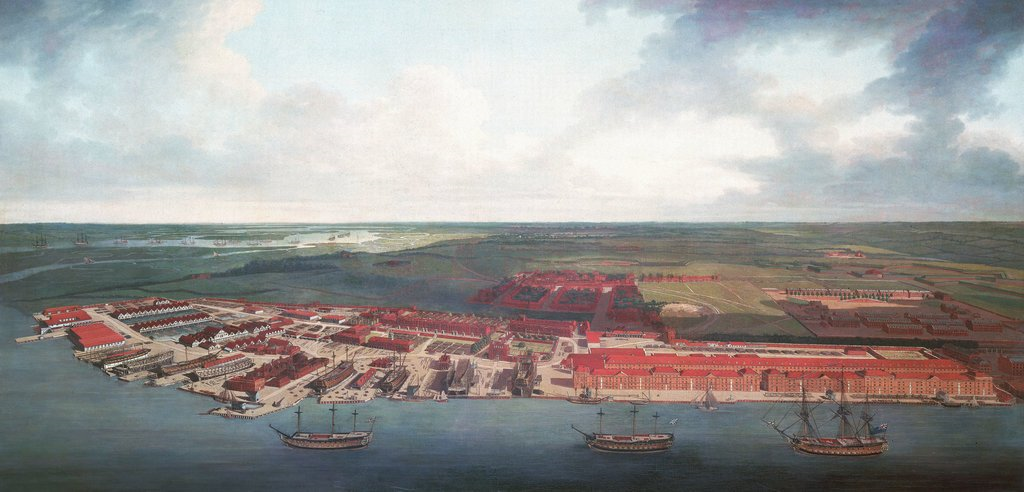How Britain sustained the war effort
Introduction
As an island nation, Britain had long exploited any opportunity for trade beyond its shores. Piracy on the Spanish Main, the sugar and triangular trades to and from the West Indies and the insatiable demand at home for sugar, tea and tobacco, all fuelled the growth of trade and the demand for ships. These were needed on the one hand for the carrying trades and, on the other, to defend their sea routes.
These routes lay to and fro across the Atlantic and up and down its western seaboard; amongst the Caribbean islands and down to South America and for the long eight month journey down the coast of Africa around the Cape of Good Hope via St Helena and across the Indian Ocean to the Indian continent. By the mid eighteenth century this was a massive industrial and commercial undertaking that occupied and consumed the whole of the British economy.
Britain’s Industrial Revolution starting in the early 1800s, had led not only to a series of critical inventions but also to a great movement of people from the land to the towns and cities.

The re-discovery of the uses of coal and iron, the invention of the steam engine that drove spinning wheels and iron forges, the building of the canal network and the metalling of roads, all led to astonishing levels of invention and productivity. These developments were unmatched in the rest of Europe and led to Britain’s undoubted advantage at war.
The Dockyards
Nowhere was the power of industry more obvious than in the country’s dockyards: The Royal Navy’s at Chatham on the Medway and the East India Company’s at Deptford on the Thames (See’ Nathaniel Dance & the East India Company’s Marine’ chapter in the Atlantic & Oriental Worlds theme).

In both dockyards major innovations were carried out that led to a faster rate of ship building than France could ever achieve and an advantage at sea that led to a series of French defeats ending with the Battle of Trafalgar in October 1805.
In 1547, the year of Henry VIII’s death, the Navy had eighty sea-going vessels and Chatham has been established as its principal centre of ship-building. The River Medway at Chatham was close to London, provided a safe anchorage and allowed ships to be beached on its mud banks for graving: the burning off and cleaning of ship hulls, before they were tarred and caulked.
While the 800 tons Mary Rose had sunk ignominiously off Portsmouth in King Henry’s reign, HMS Victory, launched in 1765, represented the peak of British naval power. Victory’s keel was laid in 1759 and was designed to be a first-rater and carry 100 guns on three decks. Her keel was 259 feet and each of her blocks was 18 ins square. She took over six years to complete before being launched in May 1765. It took the Press over three months to man her. She lay at anchor for 13 years before being called forward to active service in 1778 and her greatest triumph was at the battle of Trafalgar in October 1805.
There were, of course, long periods in the history of the dockyards when there was little interest in or need for warships and on one occasion, in 1667, the Medway was attacked by a Dutch fleet; ships were boarded and sunk and Chatham bombarded. During the Seven Years War between 1756 and 1763 (see ‘HM 66th Foot’ chapter in the St Helena theme), Chatham boomed as Britain’s Navy fought its ships throughout at its end, had responsibility for its expanding empire.

